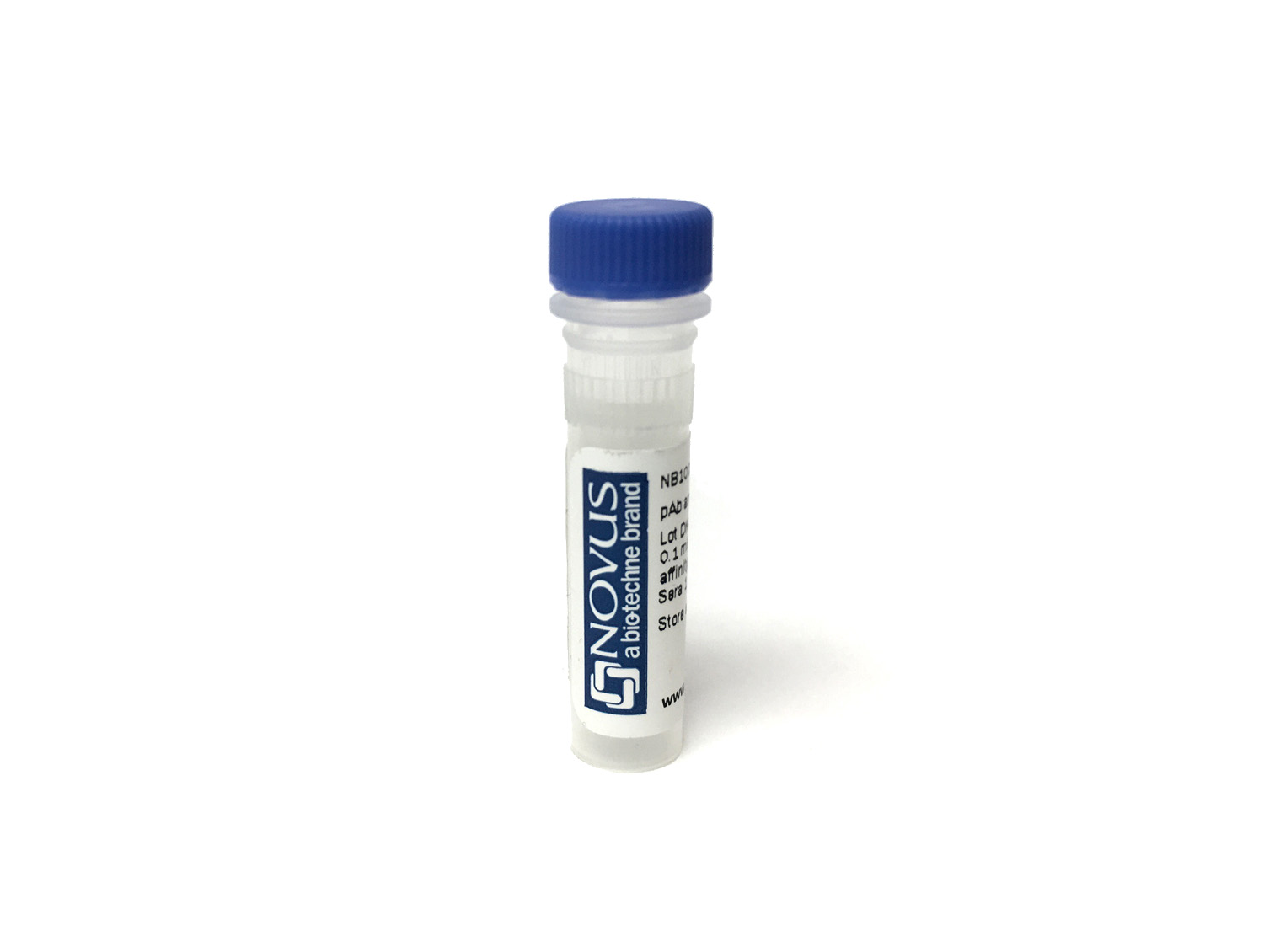Chikungunya Virus E1 Antibody (988133) [Janelia Fluor® 549]
Novus Biologicals, part of Bio-Techne | Catalog # FAB97791I


Conjugate
Catalog #
Key Product Details
Species Reactivity
Viral
Applications
ELISA
Label
Janelia Fluor 549
Antibody Source
Monoclonal Mouse IgG1 Clone # 988133
Concentration
Please see the vial label for concentration. If unlisted please contact technical services.
Product Specifications
Immunogen
Human embryonic kidney cell line HEK293-derived transfected with viral Chikungunya Virus E1
Tyr810-Gly1224
Accession # Q8JUX5
Tyr810-Gly1224
Accession # Q8JUX5
Specificity
Detects viral Chikungunya Virus E1 in direct ELISAs.
Clonality
Monoclonal
Host
Mouse
Isotype
IgG1
Applications for Chikungunya Virus E1 Antibody (988133) [Janelia Fluor® 549]
Application
Recommended Usage
ELISA
Optimal dilutions of this antibody should be experimentally determined.
Application Notes
Optimal dilution of this antibody should be experimentally determined.
Formulation, Preparation, and Storage
Purification
Protein A or G purified from hybridoma culture supernatant
Formulation
50mM Sodium Borate
Preservative
0.05% Sodium Azide
Concentration
Please see the vial label for concentration. If unlisted please contact technical services.
Shipping
The product is shipped with polar packs. Upon receipt, store it immediately at the temperature recommended below.
Stability & Storage
Store at 4C in the dark.
Background: Chikungunya Virus E1
Although analysis suggests CHIKV originated in Africa over 500 years ago, first infections weren't reported until the 1950s (1-3). CHIKV has evolved three distinct genotypes, or strains, based on location, termed West African (WA), East/Central/Southern African (ECSA), and Asian (2-3). The WA strain has been most closely associated with enzootic transmission whereas the ECSA strain contributes more to urban epidemics (2). Nonhuman primates are the primary reservoir for the viral host with transmission occurring via mosquitos biting and infecting humans (1-3). Upon acute infection, the virus replicates in cells including fibroblasts and macrophages resulting in innate immune response in infected tissues characterized by infiltrating cells like macrophages, monocytes, natural killer (NK) cells, and lymphocytes (2,3). Infection results in increased production of proinflammatory cytokines such as interferon alpha (IFN-alpha) and interleukin 6 (IL-6), chemokines, and growth factors (2,3). Physical manifestations of infection are high fever, polyarthralgia, headache, arthritis, and rash (1-3). CHIKV symptoms can be confused with other infections like those from dengue fever and Zika virus (1-3). There are no specific antivirals or vaccines for CHIKV, but rather symptoms are treated with antipyretics and non-steroidal anti-inflammatory drugs (NSAIDs) (2,3). While in vitro culture models and in vivo rodent and non-human primate models have been used to study CHIKV pathogenesis and advance our knowledge of the disease, the specific cellular mechanisms are not fully understood (3).
References
1. Vu DM, Jungkind D, Angelle Desiree LaBeaud. Chikungunya Virus. Clin Lab Med. 2017;37(2):371-382. https://doi.org/10.1016/j.cll.2017.01.008
2. Silva LA, Dermody TS. Chikungunya virus: epidemiology, replication, disease mechanisms, and prospective intervention strategies. J Clin Invest. 2017;127(3):737-749. https://doi.org/10.1172/JCI84417
3. Ganesan VK, Duan B, Reid SP. Chikungunya Virus: Pathophysiology, Mechanism, and Modeling. Viruses. 2017;9(12):368. Published 2017 Dec 1. https://doi.org/10.3390/v9120368
Long Name
Chikungunya Virus Envelope 1
Alternate Names
CHICKV E1, CHIKV-E1
Additional Chikungunya Virus E1 Products
Product Documents for Chikungunya Virus E1 Antibody (988133) [Janelia Fluor® 549]
Product Specific Notices for Chikungunya Virus E1 Antibody (988133) [Janelia Fluor® 549]
Sold under license from the Howard Hughes Medical Institute, Janelia Research Campus.
This product is for research use only and is not approved for use in humans or in clinical diagnosis. Primary Antibodies are guaranteed for 1 year from date of receipt.
